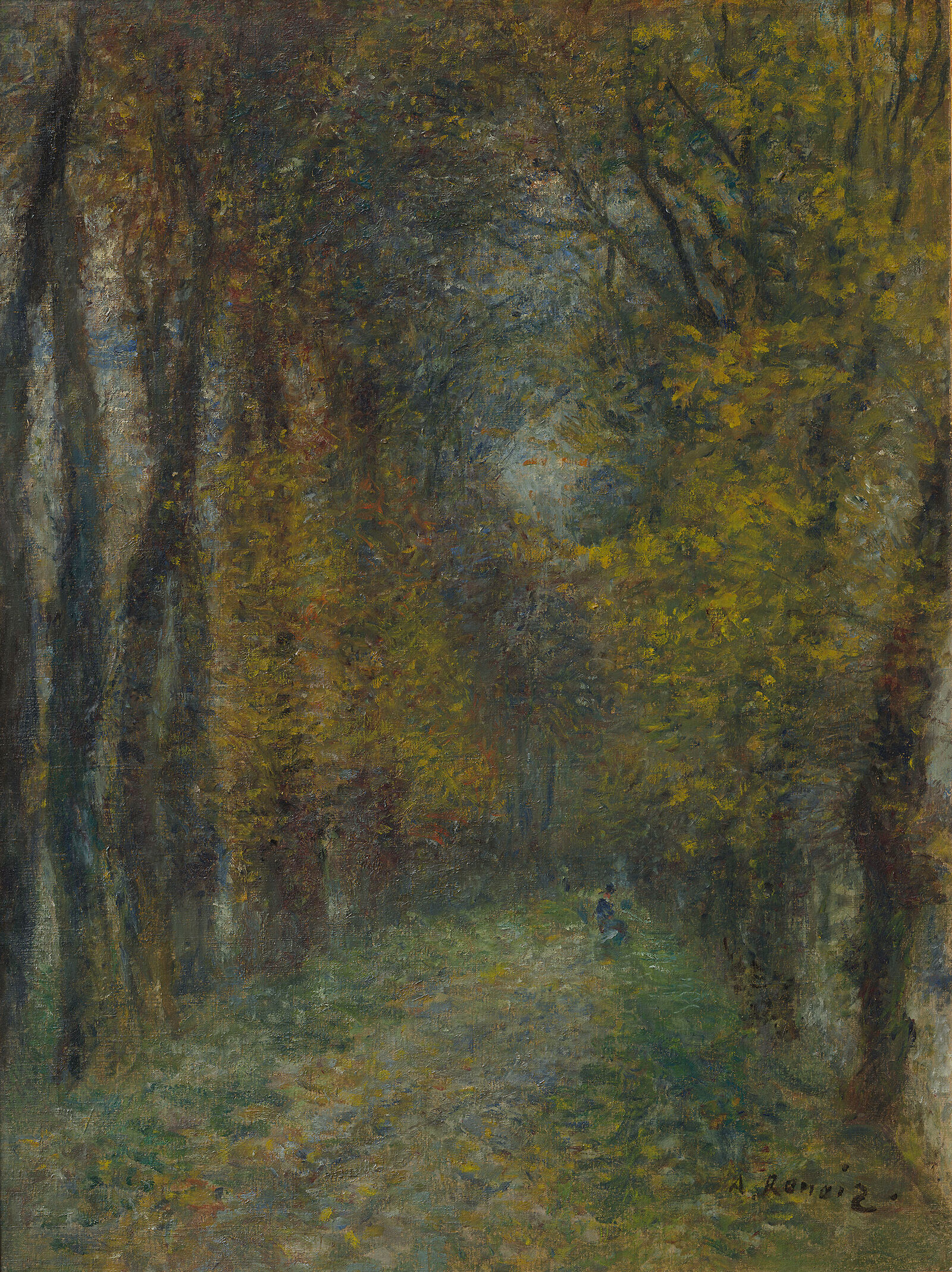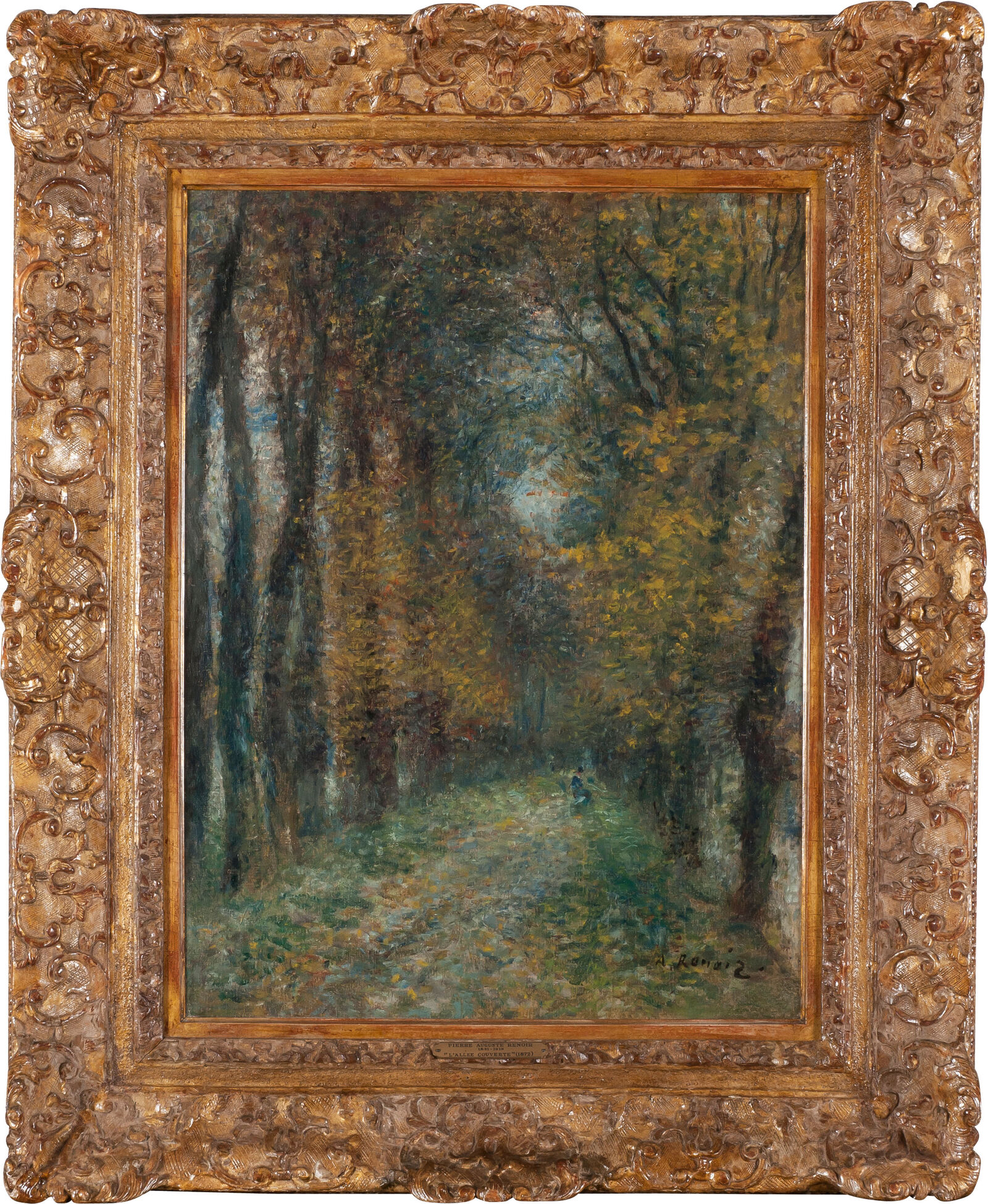Pierre-Auguste Renoir
Shaded Path, 1872
On view
6 further works by Renoir
Copy link
Oil on canvas, 61 x 46 cm
Signed lower right: A. Renoir.
Inv.-no. MB-Ren-01
Like the painters of the previous generation in Barbizon, Pierre-Auguste Renoir and Claude Monet also visited the forest of Fontainebleau. In this view of a forest path, which actually shows a painter at work, Renoir seems to follow the models of his predecessors. However, the dissolution of form is a characteristic of Impressionism.
Images of forest paths and wooded thickets had already played an important role in the painting of the Barbizon School. Paths with overhanging trees constituted a kind of natural “interior” and allowed the precursors of Impressionist landscape painting such as Camille Corot and Charles-François Daubigny to explore subtleties of light and shadow by rendering the coloristic effects of sunlight through thick foliage. In the 1860s Pierre-Auguste Renoir followed in their footsteps, traveling to the forest of Fontainebleau south of Paris to paint landscapes en plein air. His first depiction of the motif known in French as sous-bois (“undergrowth”) was created there in the summer of 1866 and still shows strong stylistic affinities to Realism (The Painter Le Cœur Hunting in the Fontainebleau Forest, Museu de Arte de São Paulo).
In Shaded Path, the narrative element is diminished in favor of the detailed observation of nature. The path, composed as a triangle, leads the viewer’s gaze into the center of the pictorial space, where an artist can be seen at work. The two figures in the distance, rendered in rapid daubs of paint, blend into the surrounding vegetation and is discernable only upon careful viewing. The diagonal rows of closely planted tree trunks accentuate the perspectival pull into depth and immerse the viewer in the composition, evoking a sense of stillness and seclusion. The sunlit foliage in the center of the image is suggested by thick daubs of glowing yellow-green, accentuated with strokes of unmixed red. This free handling of paint is typical of Renoir’s approach to the depiction of paths and forests, where he sought to model the varying textures of ground, tree trunks, and foliage with tactile appeal.
Daniel Zamani
Renoir, Wildenstein Arte, Buenos Aires, 1947, no. 15
Impressionism: The Art of Landscape, Museum Barberini, Potsdam, January 21–May 28, 2017
Impressionism: The Hasso Plattner Collection, Museum Barberini, Potsdam, from September 5, 2020
A New Art: Photography and Impressionism, Museum Barberini, Potsdam, February 12–May 8, 2022
n.d., G.
Hazard, Paris
December
1–3, 1919, Galerie Georges Petit, Paris, collection of G. Hazard, lot 209
n.d.,
Sam Salz, New York
n.d.,
James and Helen K. Copley, La Jolla
n.d.,
David C. Copley, La Jolla, inherited from the above
May 9,
2013, Sotheby’s, New York, lot 257, consigned by the above
Guy-Patrice Dauberville and Michel Dauberville, Renoir: Catalogue raisonné des tableaux, pastels, dessins et aquarelles, vol. 1, Paris 2007, no. 79, ill. p. 161
Impressionism: The Art of Landscape, exh. cat. Museum Barberini, Potsdam 2017, no. 25, p. 17, 115, ill. p. 112, 123
Barberini Audioguides
Do you have suggestions or questions?
sammlung@museum-barberini.de.

